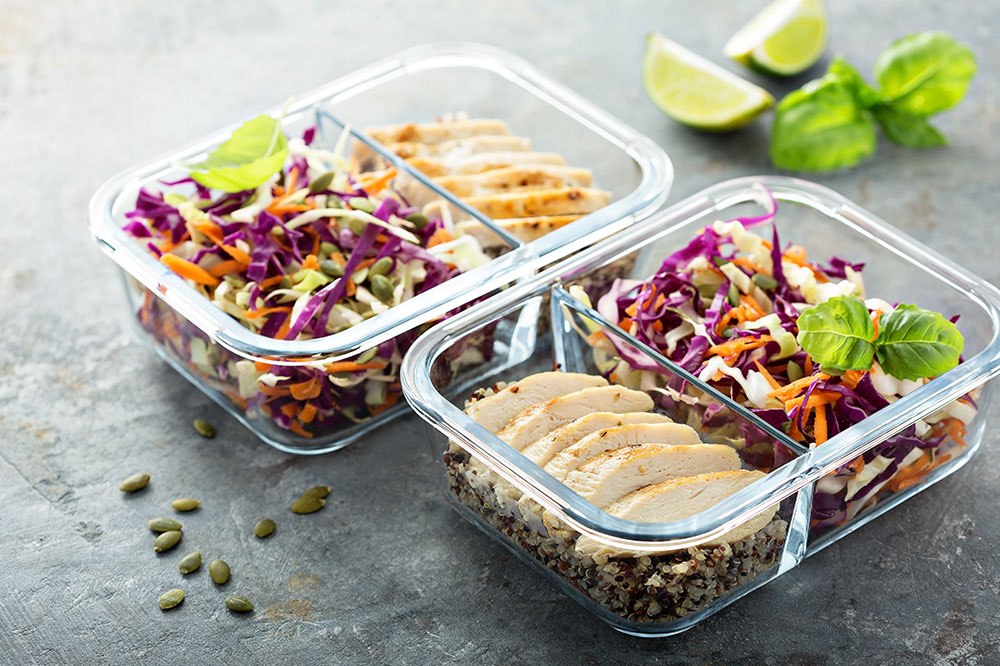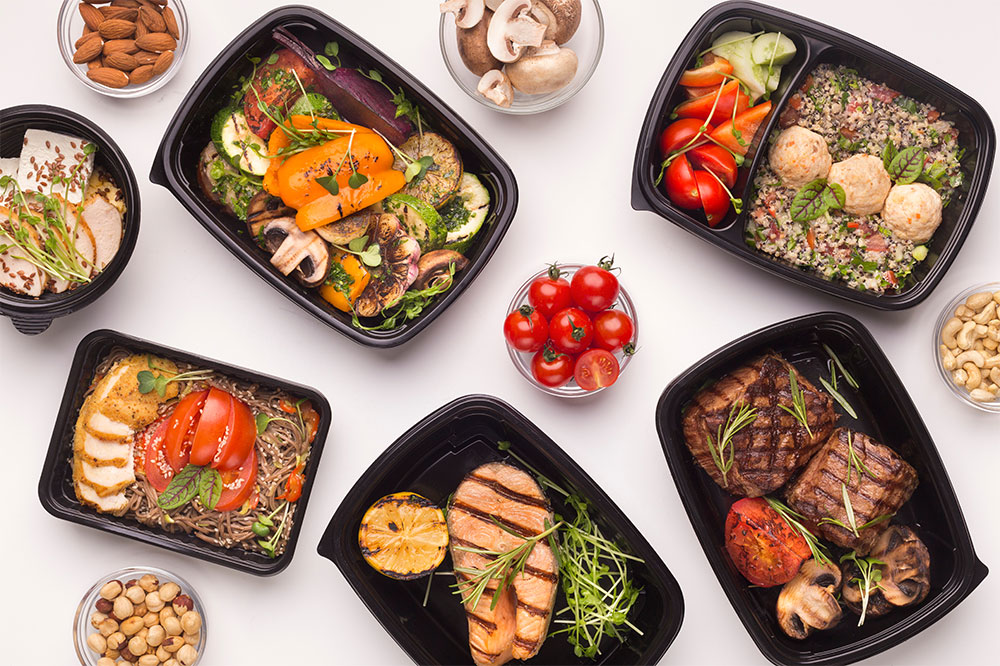Ultimate Guide to Choosing the Perfect Meal Kit Subscription Service for Your Lifestyle
This comprehensive guide helps you select the perfect meal kit subscription service tailored to your dietary needs, budget, and culinary preferences. Learn how to evaluate providers, plan meals, and ensure ingredient quality for a more enjoyable and health-conscious home dining experience.

Ultimate Guide to Choosing the Perfect Meal Kit Subscription Service for Your Lifestyle
In recent years, meal kit subscription services have revolutionized home dining by offering convenience, variety, and nutritional value all in one package. These services cater to a broad spectrum of consumers, from busy professionals and health-conscious individuals to families seeking quick yet wholesome meal solutions. Delivered directly to your doorstep, they provide pre-portioned ingredients or pre-prepared dishes, making home cooking easier than ever before. With a wide array of options—ranging from fully cooked meals to minimal prep ingredients—there is a meal kit tailored to nearly every dietary preference, taste, and lifestyle.
Choosing the right meal kit service, however, can be a daunting task given the plethora of options available on the market. To help you make an informed decision, this comprehensive guide explores essential factors to consider when selecting a meal kit subscription that best aligns with your personal needs, cuisine preferences, dietary restrictions, and budget. Whether you're a novice cook or a culinary expert, this guide offers detailed insights to elevate your home dining experience.
Understanding Your Food Preferences and Dietary Restrictions
The first step in selecting a meal kit service is to evaluate your culinary preferences and dietary needs. Do you enjoy diverse cuisines such as Italian, Asian, or Mediterranean? Are you following a specific diet like vegetarian, vegan, Paleo, Keto, or gluten-free? Many services provide menus tailored to specific dietary plans, so identifying your preferences will help narrow your options. Take some time to explore the menus of local and national meal kit providers—most have sample meals or weekly menus you can review. This will help determine whether the provider offers meals that excite your palate and meet your nutritional requirements.
For those with food allergies or sensitivities, it is crucial to verify ingredient transparency and allergen information. Look for providers that clearly list ingredients and have processes in place to accommodate special dietary needs. If you’re an adventurous eater, seek services that experiment with unique ingredients and innovative recipes to keep your meals interesting and diverse.
Planning Your Weekly Meal Schedule and Serving Sizes
To ensure satisfaction and avoid food waste, plan your weekly meals ahead of time. Consider the number of meals needed per week and the number of servings per meal. Will your household enjoy leftovers, or do you prefer freshly prepared meals each day? Some meal kits offer larger or smaller portion sizes to suit different household sizes and appetites. Visualizing your weekly menu helps you select a subscription plan that aligns with your consumption patterns, ensuring you get maximum value without overspending.
Additionally, consider whether you want flexibility in your meal choices. Some services allow you to swap meals or skip weeks with no penalty, providing greater convenience and customization. This flexibility is particularly beneficial for households with variable schedules or dining preferences.
Aligning the Service with Your Health and Nutrition Goals
Healthier eating habits are easier to achieve with meal kit services that emphasize nutritious ingredients and balanced meals. If maintaining a healthy lifestyle is a priority, choose providers that focus on wholesome, minimally processed ingredients, and offer menu options rich in vegetables, lean proteins, and whole grains. Many services now highlight their nutritional information and provide calorie counts to help you make mindful choices.
Busy professionals or individuals aiming for specific health outcomes—such as weight loss, muscle gain, or managing chronic conditions—should look for meal plans that support these goals. Some providers offer specialized menus designed by dietitians to ensure nutritional adequacy and portion control. These options make it easier to stay committed to your health objectives without sacrificing convenience.
Budget Considerations and Cost-Effectiveness
Establishing a clear budget before subscribing is essential to avoid unexpected expenses. Meal kit prices vary depending on the provider, meal complexity, and number of servings. To determine affordability, calculate your weekly food budget, factoring in the cost per meal and potential delivery fees.
Assess whether the service offers discounts for longer subscriptions or introductory offers. Also, consider the value you receive for the price—are the ingredients fresh and high-quality? Are the recipes diverse and satisfying? Comparing these factors helps ensure you select a service that provides good value for your money while fitting within your financial framework.
Choosing the Right Cooking Experience Level
Your cooking skill level plays a significant role in choosing a meal kit service. Some providers specialize in quick, no-cook or minimal-prep meals suitable for busy days or beginners. Others offer more advanced recipes that cater to culinary enthusiasts seeking challenging and gourmet experiences. It’s important to select a service that matches your comfort level in the kitchen to maximize enjoyment and reduce frustration.
For novice cooks, simple step-by-step instructions and pre-measured ingredients can make cooking more approachable. Advanced cooks might prefer kits that introduce new techniques or exotic ingredients to expand their culinary horizons. The right balance of challenge and simplicity enhances your home cooking experience and encourages skill development.
Additional Offerings and Customization Options
Many meal kit providers now offer extras to enrich your dining experience. These may include add-on items such as beverages, desserts, snacks, or premium ingredients like high-quality meats or organic produce. Some services also provide customization options, allowing you to swap ingredients or select meals based on specific preferences or dietary restrictions.
Carefully review any additional costs for these extras to ensure they align with your budget. Customization enhances flexibility, letting you tailor your weekly menu to your taste and nutritional needs, making your meal kit experience more personalized and satisfying.
Ingredient Sourcing and Ensuring Quality
The quality of ingredients is the cornerstone of a successful meal kit experience. Reputable providers prioritize sourcing ingredients that are fresh, organic, and sustainably produced. Transparency regarding sourcing policies is vital; look for companies that clearly state their sourcing standards and certifications.
Some providers emphasize local sourcing to support regional farmers and reduce carbon footprint. Organic certifications, non-GMO assurances, and commitment to sustainability not only contribute to better health but also align with environmentally conscious consumer values. Before subscribing, review ingredient sourcing information to ensure the quality and integrity of what you’re cooking and eating.
In conclusion, selecting the ideal meal kit subscription service requires careful consideration of your dietary preferences, lifestyle, budget, and culinary skills. Through thorough research and assessment of these factors, you can find a service that enhances your home dining experience, promotes healthier eating habits, and fits seamlessly into your routine. With the right choice, meal kits can transform your approach to cooking and dining, making home-cooked meals more accessible, enjoyable, and diverse than ever before.





